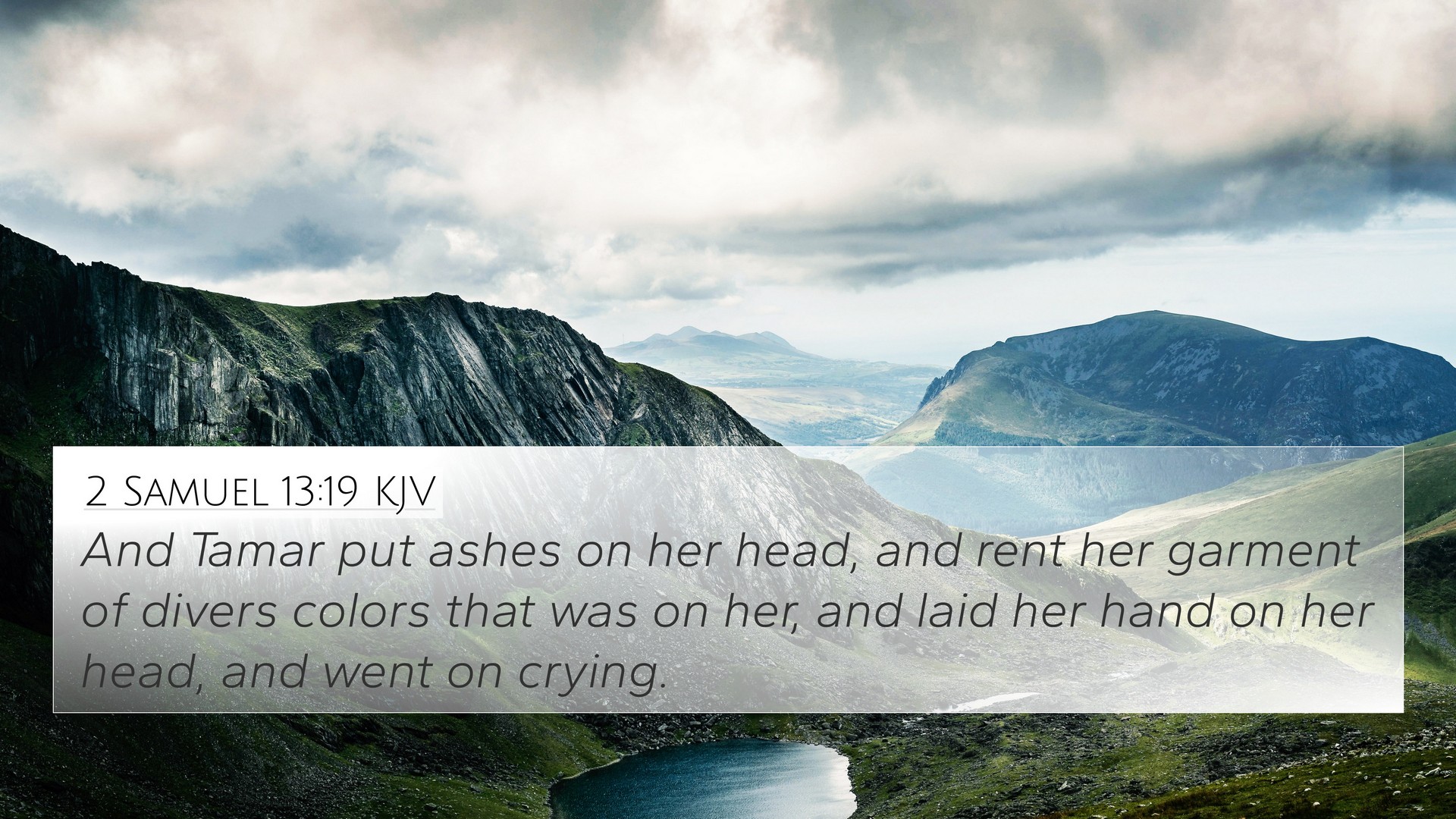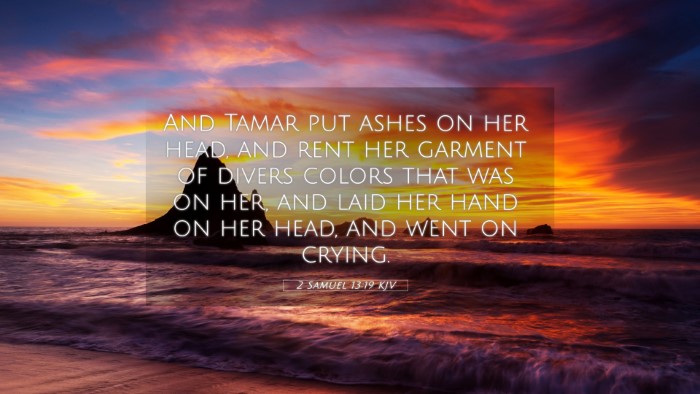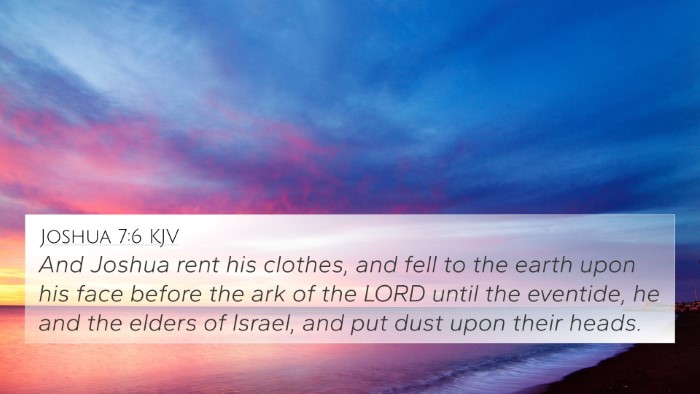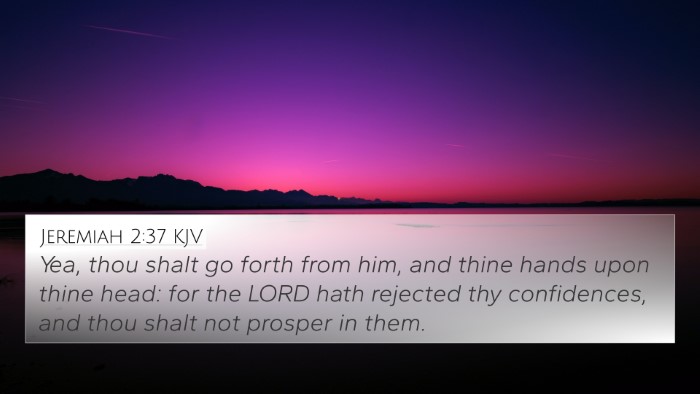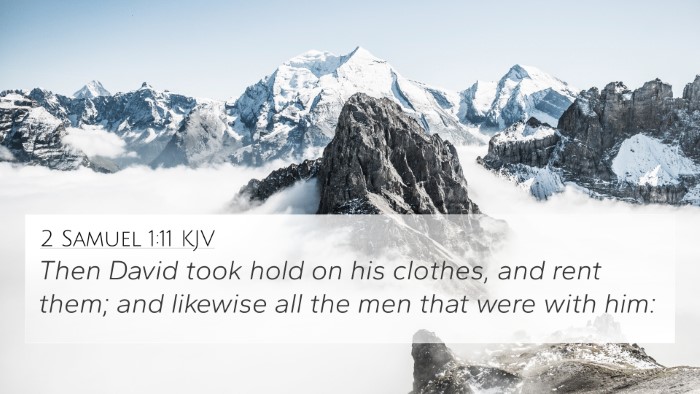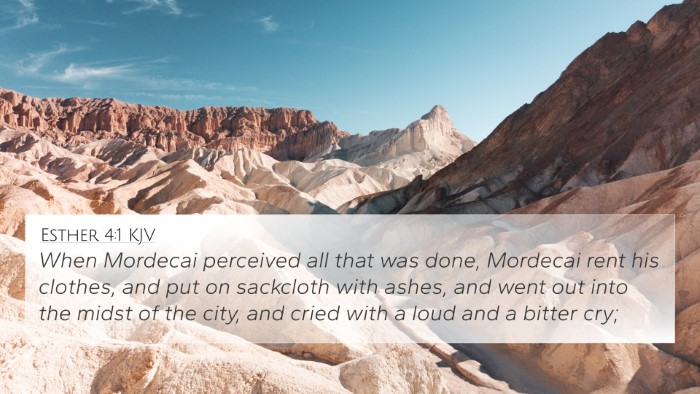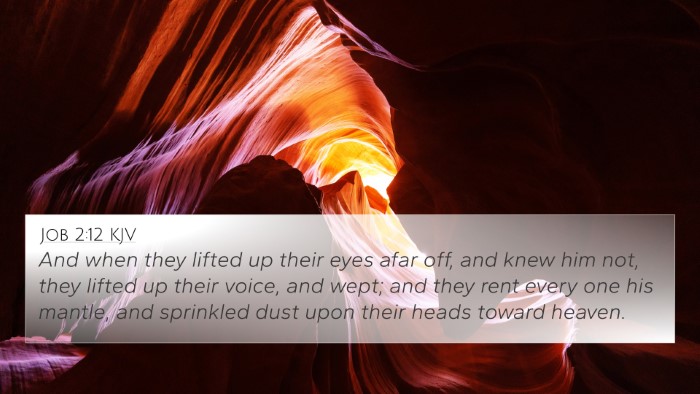Understanding 2 Samuel 13:19
Bible Verse: 2 Samuel 13:19 - "And Tamar put ashes on her head, and tore her robe of many colors that was on her, and laid her hand on her head, and went on crying."
Overview of the Context
This verse is situated within a troubling narrative regarding the tumultuous family dynamics of King David. It follows the horrific event of Tamar's violation by her brother Amnon, portraying her profound grief and humiliation. The act of putting ashes on her head and tearing her robe is steeped in biblical symbolism, reflecting mourning and sorrow.
Commentary Insights
Matthew Henry's Commentary
Matthew Henry emphasizes the gravity of Tamar's actions as outward expressions of her inner turmoil. The ashes represent a traditional sign of mourning, commonly used in biblical times to signify grief and loss. Henry notes that Tamar's beautiful robe symbolized her status and innocence, and its tearing signifies a loss of purity and dignity. This gesture underlines the emotional weight of her victimization, accentuating the sin's impact not only on the individual but on familial relationships.
Albert Barnes' Notes
Albert Barnes interprets the tearing of Tamar's robe as indicative of her shattered virtue and the irreversible damage done to her life. The act of laying her hand on her head signifies despair and the weight of her burden. Barnes also draws attention to the cultural implications of her mourning, suggesting that her grief is not just personal but reflects societal disgrace that could follow her. The commentary further connects her lament to themes of justice and retribution within the biblical narrative.
Adam Clarke's Commentary
Adam Clarke provides a vivid depiction of Tamar's mourning, noting that the ashes symbolize her desolation. Clarke highlights the contrast between her previous life and her new reality after the assault. Moreover, Clarke draws parallels between Tamar's story and other biblical figures who faced similar struggles, using her experience to explore broader themes of justice, victimization, and societal perceptions of women in the ancient world.
Symbolism and Thematic Connections
The actions of Tamar in this verse deeply resonate with themes prevalent throughout the Scriptures, highlighting the weight of sin, the experience of suffering, and the need for divine justice. The tearing of the robe can symbolize loss—not just personal but relational and spiritual. This incident connects to several biblical themes including:
- Mourning and Grief: Connections to Job 2:12; Jeremiah 14:2—where similar mourning practices are depicted.
- Violation and Justice: References to Deuteronomy 22:24; Proverbs 6:32-33—emphasizing the grave nature of sexual sin and its consequences.
- Family Dysfunction: Links to Genesis 37:34-35; Matthew 10:36—illustrating the destructive cycles of sin within family structures.
- Women in Distress: Aligns with examples from 1 Samuel 1:10; Ruth 1:20—where women express deep sorrow and face societal stigma.
- Repentance and Restoration: Echoes themes found in Psalm 51, where sorrow for sin leads to the desire for renewal and healing.
Cross-Referencing Biblical Texts
Understanding 2 Samuel 13:19 invites further exploration through cross-references that deepen our comprehension of its implications:
- 2 Sam 13:1-14: The account of Amnon and Tamar, providing essential context for her mourning.
- 2 Sam 13:28-29: The subsequent events of Amnon's death, illustrating cycles of violence and retribution.
- Genesis 38:14-15: Tamar (Judah's daughter-in-law) disguising herself in mourning, a parallel in familial themes.
- Esther 4:1-3: Esther's response to crisis with public displays of mourning, similar to Tamar’s actions.
- Lamentations 1:8: The anguish of a city mourning its loss, connecting collective grief to individual sorrow.
Tools for Bible Cross-Referencing
For readers seeking to understand connections between Bible verses, various tools can enhance the study experience:
- Bible Concordance: A useful resource for locating words and themes across scripture.
- Bible Cross-Reference Guide: Helps identify verses that support or oppose particular themes.
- Cross-Reference Bible Study: Methods that involve systematic study across related verses.
- Bible Reference Resources: Include commentaries and study Bibles that facilitate deeper understanding.
Conclusion
The depth of meaning in 2 Samuel 13:19 lies not only in Tamar's actions but also in how they resonate throughout biblical narrative—emphasizing grief, family tragedy, and the profound emotional toll of sin. By engaging in cross-referencing and thematic exploration, readers can gain a richer understanding of the interconnectedness of scripture and the timeless truths within it. Through this exploration, individuals can discover the layers of context, the struggles of individuals, and ultimately, the messages of hope and redemption woven through the entire biblical tapestry.
